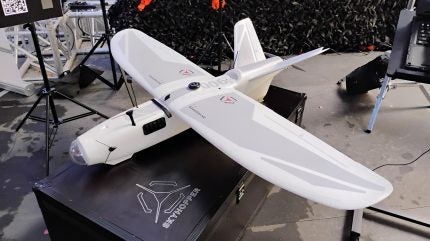
Ukraine is leaning into industrial innovation in order to bridge the quantitative disparity with Russia, as efficiencies are sought across a range of sectors, from recruitment to personnel management, through to platform development and autonomy.
By simple demographics, Ukraine cannot compete with Russia on a like-for-like basis, in industry nor in sheer numbers of personnel. To that end, it has become imperative for Kyiv to embrace the ideas of emergent generations in a bid to find new capabilities that can provide battlefield advantages for its forces.
In October, Rustem Umerov, Minister of Defence of Ukraine, outlined a 2025 target to increase domestic production of drones, long-range weapons, and ballistic missiles.
Speaking at the International Forum of Defense Industries (DFNC2) hosted in Kyiv, Umerov said Ukraine had “already invested $4bn in advancing the Ukrainian industry” and that funding would increase over the coming 12 months.
“Our priority is the development of domestic drones and long-range weapons, including ballistic missiles,” Umerov stated.
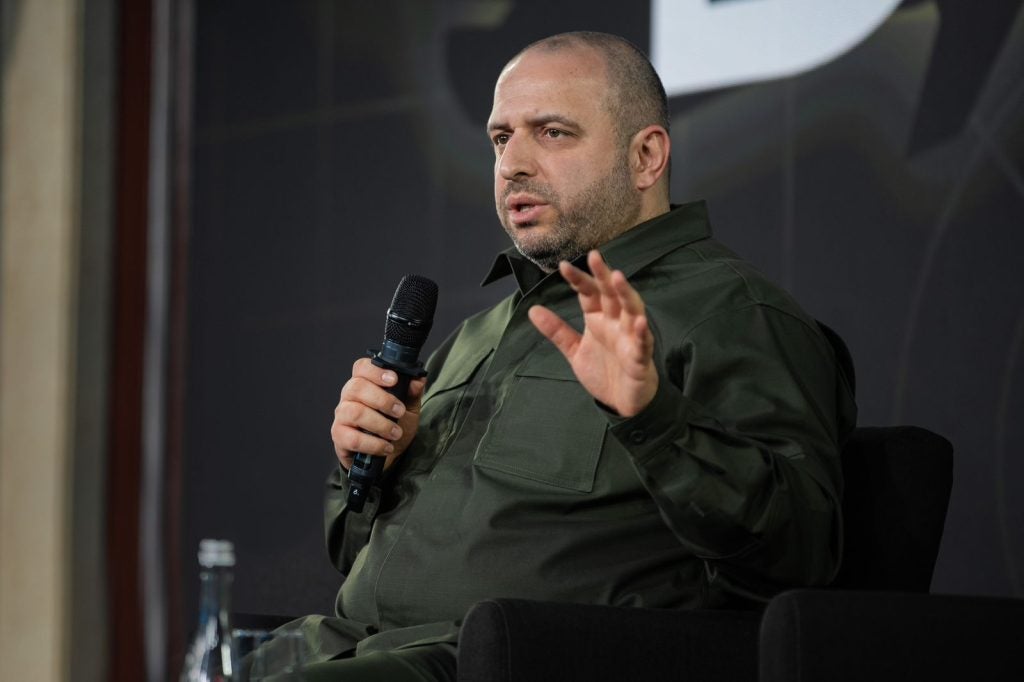
Ukraine’s Ministry of Defence (MoD) highlighted efforts to engage foreign partners in establishing joint enterprises to advance the defence sector, including vital element such as securing long-term contracts for producing, supplying, and maintaining weapons to support the needs of the country’s military.
Herman Smetanin, Minister for Strategic Industries of Ukraine, thanked delegates at the DFNC2 event, adding that Ukraine’s defence industry had “notably improved” its capabilities, and that due to new agreements and partnerships it was “heading in the right direction”.
Out of partnerships with international defence primes and donor countries, Ukraine also has opportunity to extract further gains from within the country, often marginal, but nevertheless still potentially key in reducing inefficiencies and harnessing private sector innovations.
This can be exemplified through two distinct efforts: recruitment and personnel management, and the role the country’s small and medium enterprises (SME) can have in driving innovation.
SME sector seeking investment
Gaining unprecedented access to Ukraine’s burgeoning SME sector in western Ukraine in late-September, Army Technology explored some of the new platforms and capabilities being developed that could offer a way for Kyiv to gain an advantage.
At a series of undisclosed locations in the western city of Lviv, representatives from Ukraine’s defence SME sector gathered to showcase some of the capabilities being developed for the country’s military, with multiple platforms at various stages of development and testing.
Exhibits predominantly centred on the development of autonomous systems for the land, sea, and air domains, areas in which it is possible for Ukraine to develop an asymmetric edge over Russia.
All representatives spoke on condition of anonymity due to security reasons.
Developed by Hard Cat, the Black Widow uncrewed surface vessel (USV) is intended to perform a range of maritime security functions, including reconnaissance and mine countermeasure, as well as what it termed ‘kamikaze missions’, whereby the platform operates as a one-way attack munition.
The use of one-way attack USVs by Ukraine in targetting Russia’s Black Sea fleet has seen a number of successes, with numerous examples of successful operations carried out since 2022.
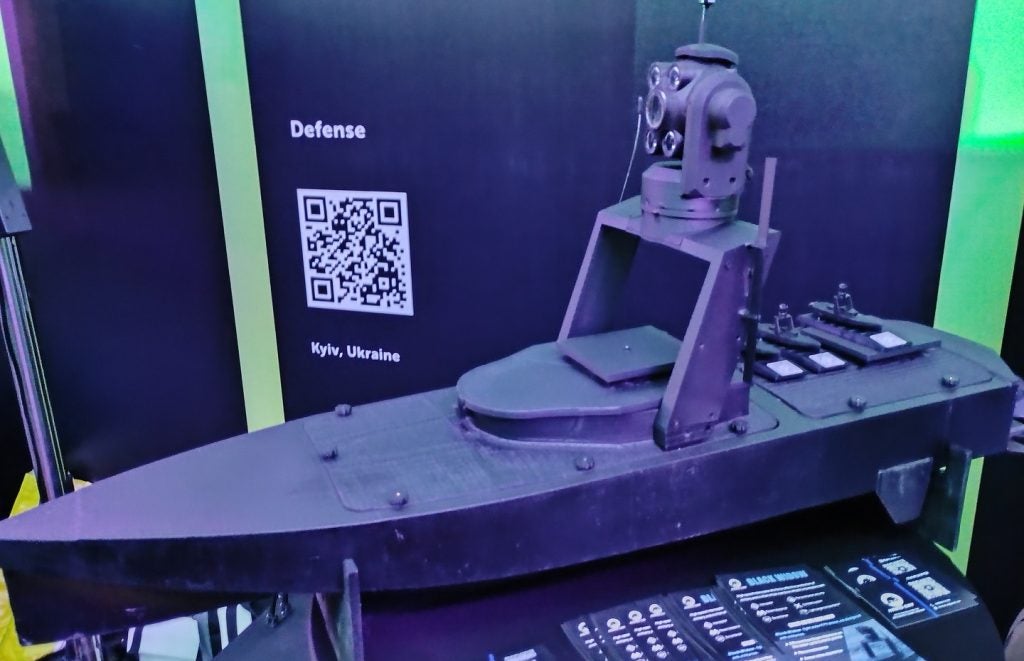
Able to reach speed of up to 40km/h with a 10km range, the Black Widow features a 3kg payload capability to accommodate mission modules, including explosives.
At present, two prototype USVs have been developed and have undergone testing by the Ukrainian military, with aspirations to scale production up to 500 units per month should it secure a production deal, company officials told Army Technology.
In an example of programmes focussed on the land domain, Ukrainian SME Rononeers showcased an automated turret, known as Shablya, of which some 400 units had been shipped to the Ukrainian Army for use in combat roles.
The turret is platform agnostic and able to be used statically or mounted, while the company had also developed a medium-sized uncrewed ground vehicle that could house the system as well as be used for logistics roles.
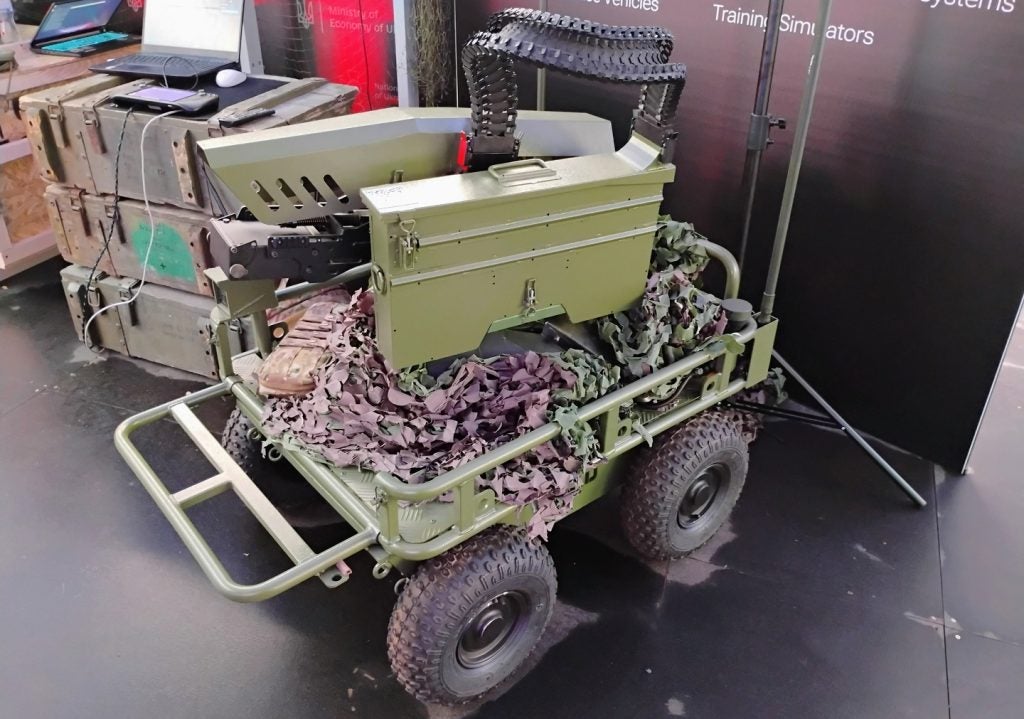
Elsewhere, and with the need for uncrewed aerial vehicles (UAVs) at an all-time high in Ukraine, a number of companies were producing platforms, command and control (C2) units, and sensors for use in that domain. One such platform was the Batar-1, which had already demonstrated an ability to operate in an EW-contested environment, company officials said, mainly in reconnaissance roles.
A smaller and cheaper alternative, the Skyhopper T-1, was also on display, with an entire unit of three UAVs and one C2 terminal costing in the region of $20,000, officials said. Skyhopper was able to operate in two gigahertz ranges, having found the 5.8GHz as being “not effective”.
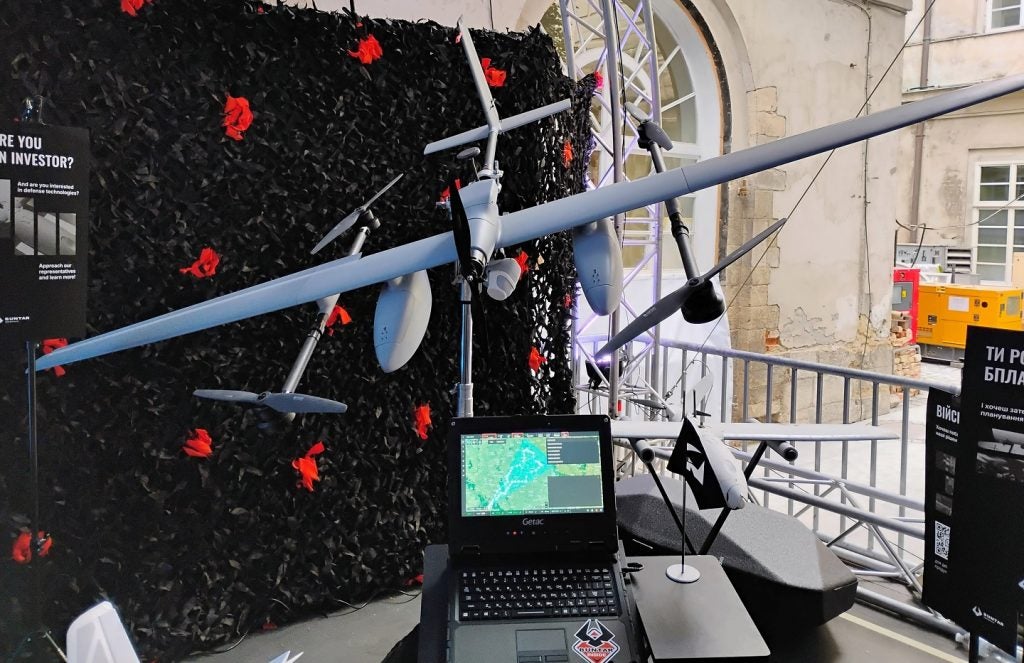
In addition, the company demonstrated the capabilities of its Co-pilot C2 system, which was able to integrate into C2 agnostic UAVs as well as the Delta command database being brought into service in Ukraine’s Ministry of Defence.
“We are trying to promote the system as best we can. The [Ukrainian military] UAV teams, they like it,” a company official told Army Technology, outlining plans to attract inwards investment in order to further develop and trial their platforms.
MoD sourcing thousands of China-origin drones
What Ukraine cannot develop from within its own SME industrial base, it will look to markets overseas, including in the area of small UAS for use in reconnaissance and strike operations, as well as loitering munitions, otherwise known as suicide drones.
In May 2024 the Ukrainian MoD more than doubled the number of DJI Mavic drones it had acquired for use in operations against Russian forces through the purchase of a further 4,200 BPAK DJI Mavic 3E small uncrewed aerial systems (UAS).
According to the MoD’s Lethal Defense Acquisition Agency the total value of the contracts amounted to $27.4m (Hrv1.1bn). Together with previous purchases, the number of DJI Mavic’s contracted by the Lethal Defense Acquisition Agency stood at the time at 8,200 sets, comprised of 7,200 DJI Mavic 3E and 1,000 DJI Mavic 3T.
“Drones have evolved into an essential component of modern warfare. They strengthen our defence capabilities, increasing military operations’ effectiveness. Therefore, the procurement of drones is one of the main tasks of the Ministry of Defense,” said Deputy Defense Minister of Ukraine Dmytro Klimenkov at the time.
In addition, the Ukrainian MoD’s Defense Procurement Agency conducted auctions for an additional 4,000 DJI Mavic 3E and 1,500 DJI Mavic 3T BPA as of 20 May, with contracts “expected to be signed”.




